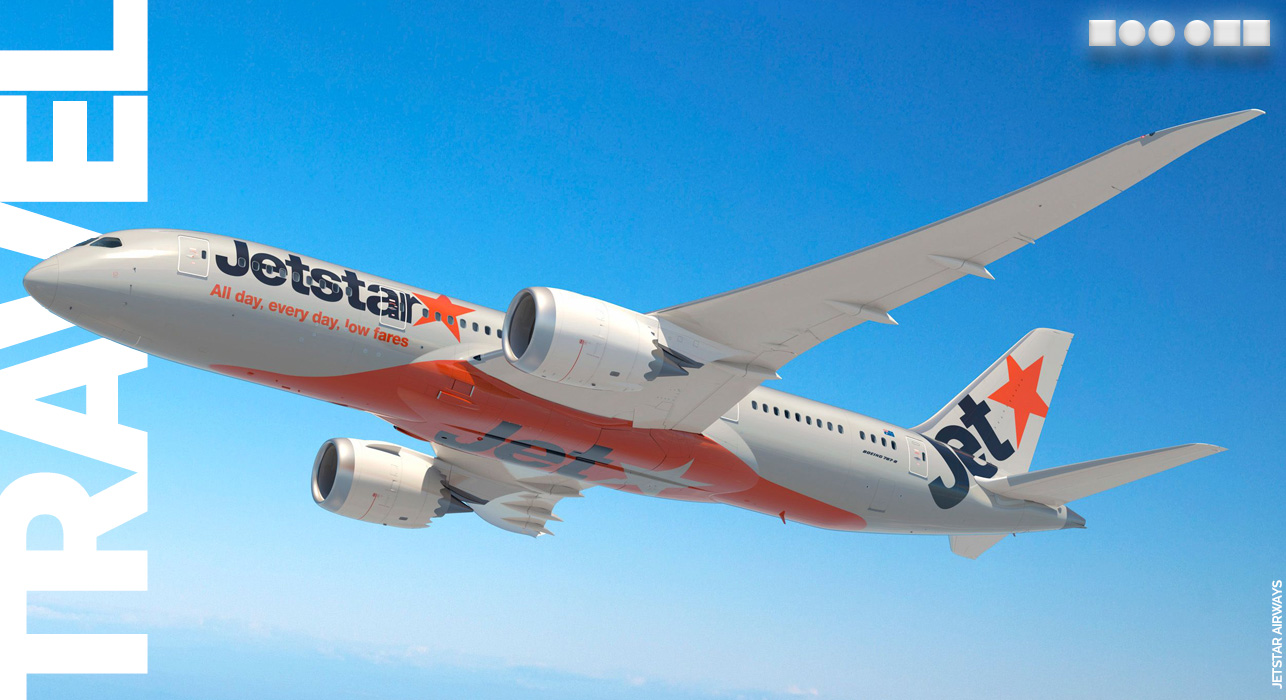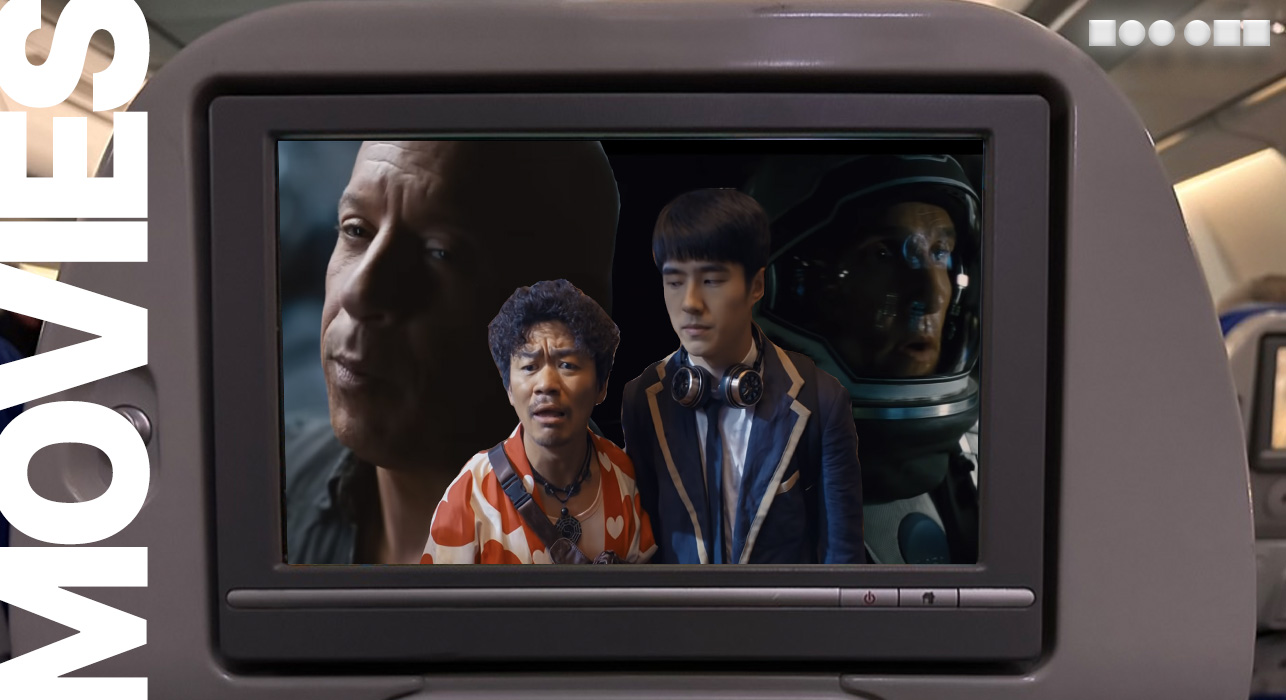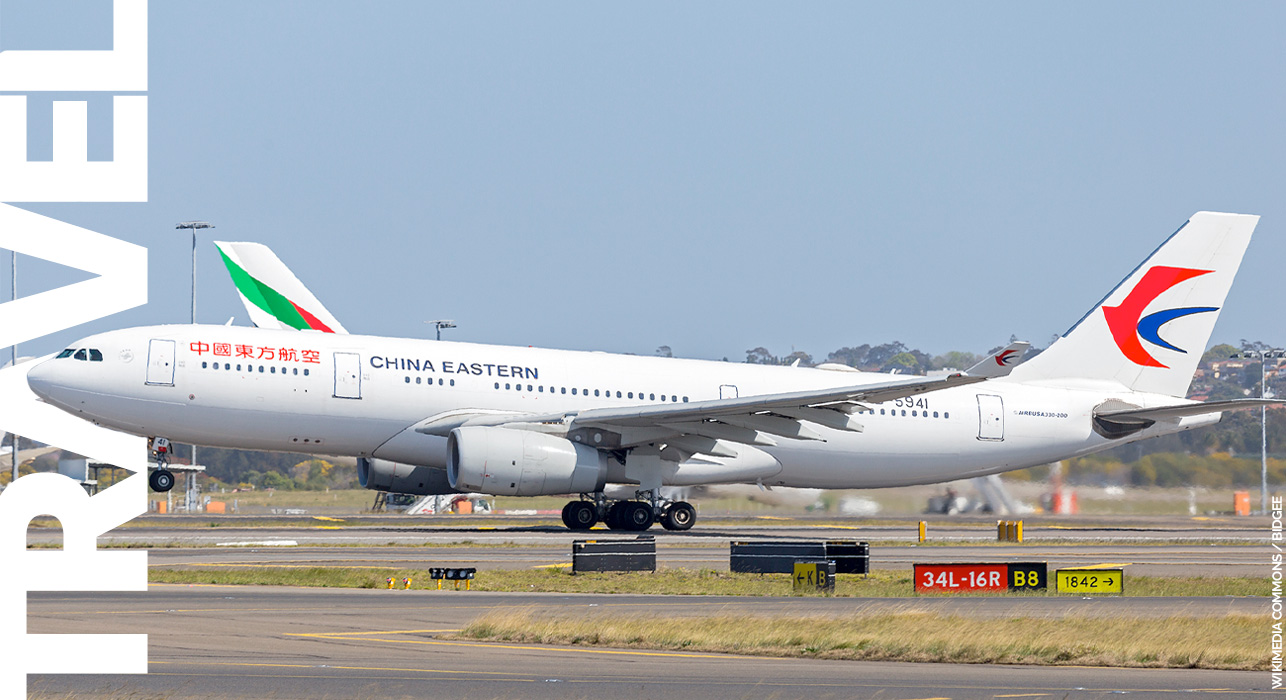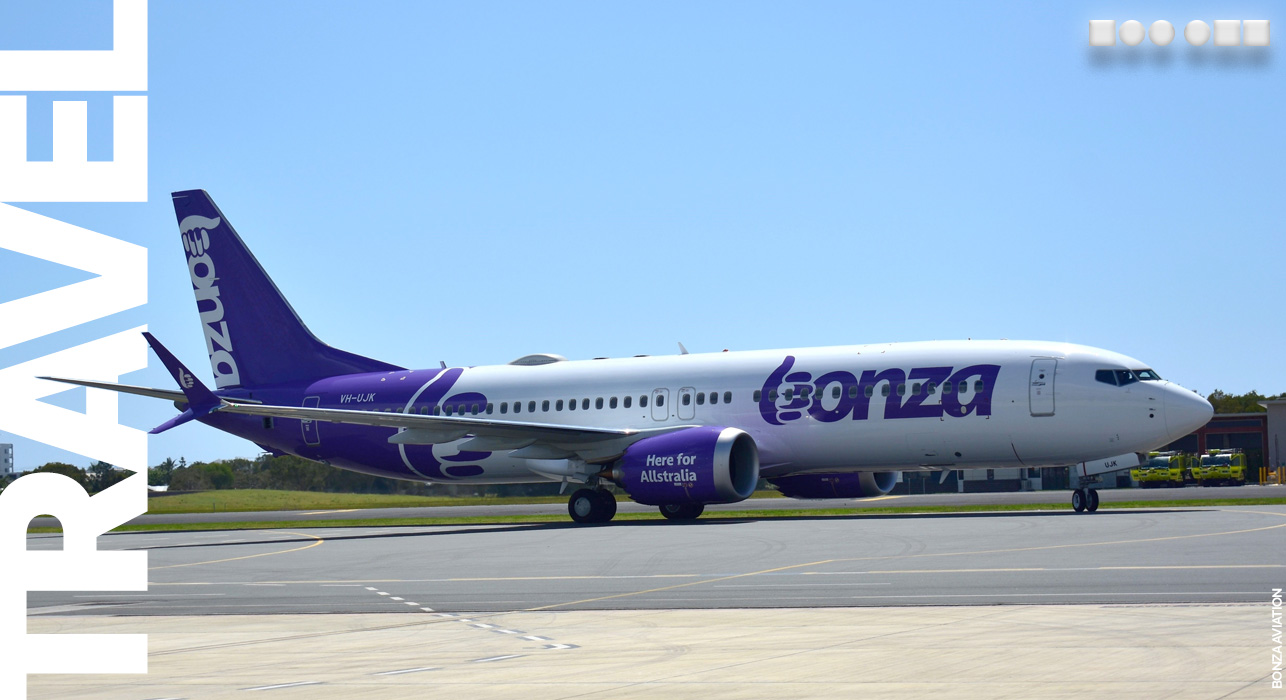In some areas, Jetstar’s long-haul service may be better than its big sister’s- and I’m not just talking about price.
I previously covered the Jetstar 787 service in April 2018- I’ve kept that post but updated a few notes. In particular, I’ve updated prices, and note that Jetstar now flies out of the low-cost-focused Terminal 3 at Narita (NRT).
Jetstar Flights 15/26
Cairns, Australia (CNS) – Osaka, Japan (KIX); then return Narita (NRT) to Cairns
Aircraft: Boeing 787-8 “Dreamliner”
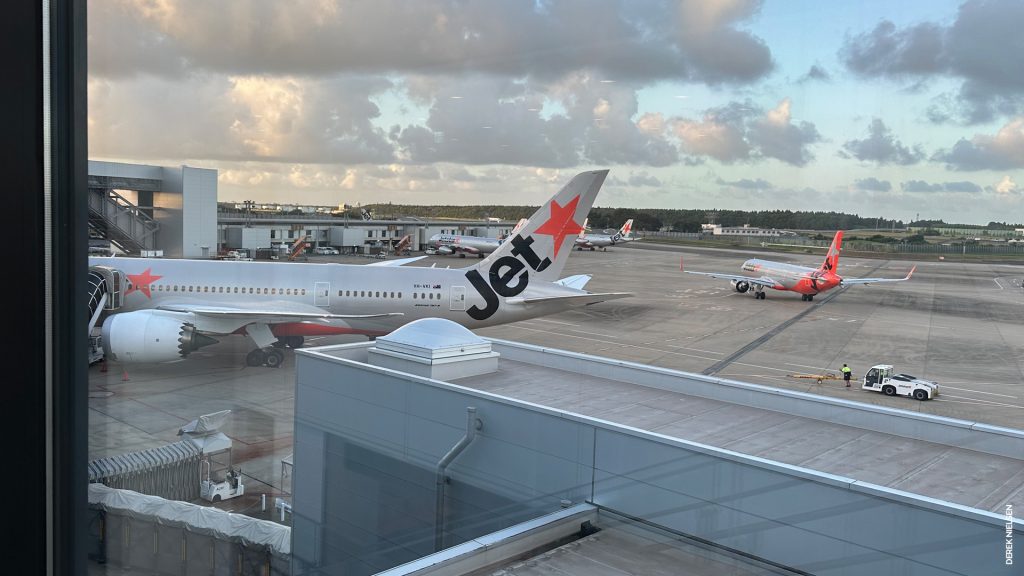
The Deal: Cairns to Osaka (Kansai airport), then returning from Tokyo’s Narita airport to Cairns. The total fare including an add-on bundle and credit card charges was $607.90 return.
Base fares (no bags, no perks, no food) are frequently discounted out of Cairns in low-demand periods- in this case I was travelling in early August, which is summer in Japan. Temperatures consistently hit 35 degrees Celsius (95 degrees Fahrenheit) and high humidity, so if you’re not used to hotter weather this might be a less attractive time to travel- maybe a May or October flight works a bit better in that case.
A promotion in July offered a base fare from Cairns to Osaka for $269 return (officially “return for free”- that is, $269 to Osaka, $0 back) if booked directly through the airline. Our flights seemed to be pretty heavily booked, so the pricing must be working out okay for them.
The Schedules: Jetstar operates two daily flights from Cairns to Japan- the Tokyo flight leaves at about 11:25am, while the Osaka flight leaves at 12:25pm daily, arriving at about 6:30pm local time. Return flights leave Japan at about 8pm or 9pm local time, arriving in Cairns at 04:20am (Tokyo-Narita) and 5:15am (Osaka-Kansai). The arrival times will become a bit more reasonable once daylight saving in Japan ends.
We did experience a two-hour delay on the ground in Cairns due to a bungle with maintenance paperwork being submitted to Australian authorities, which caused a little bit of a squeeze at the other end. Jetstar doesn’t have a great reputation for punctuality, but to be fair, I’ve flown this route about 5 times and this is the only time I’ve had a major delay. The return flight out of Tokyo was about five minutes late departing, which is neither here nor there on a seven-hour journey.
The Airports: Cairns Airport was probably the weakest link in the chain; lines at passport control were lengthy, and there was only one coffee shop and one newsagent operating in the departures hall catering for hundreds of departing passengers. (That assumes you had enough time to buy something anyway.)
However, Cairns has proven quite popular as a departure point- Virgin Australia has just launched services to Tokyo-Haneda, and Singapore Airlines is boosting capacity on its Cairns flights– and the airport is in the process of a major upgrade as of August 2023.
I wrote about Osaka’s Kansai Airport (KIX) in the previous blog post– I haven’t checked out the departures side since 2018 so won’t mention it here. One thing that has changed, though, is that you can now use the Japanese government’s Visit Japan Web to complete your customs and immigration forms in advance. I breezed through KIX on arrival in about five minutes- less time than it took to buy a Coke in Cairns- so it’s worth keeping that in mind if you’re headed to Japan.
Jetstar now uses Narita’s Terminal 3 for departures; it’s a terminal mostly used by local low-cost carriers like Spring or Jeju Air, and the aesthetic definitely matches the premise. You check in and print bag tags at a kiosk, then hand your bag over (if necessary) at another self-service bay.
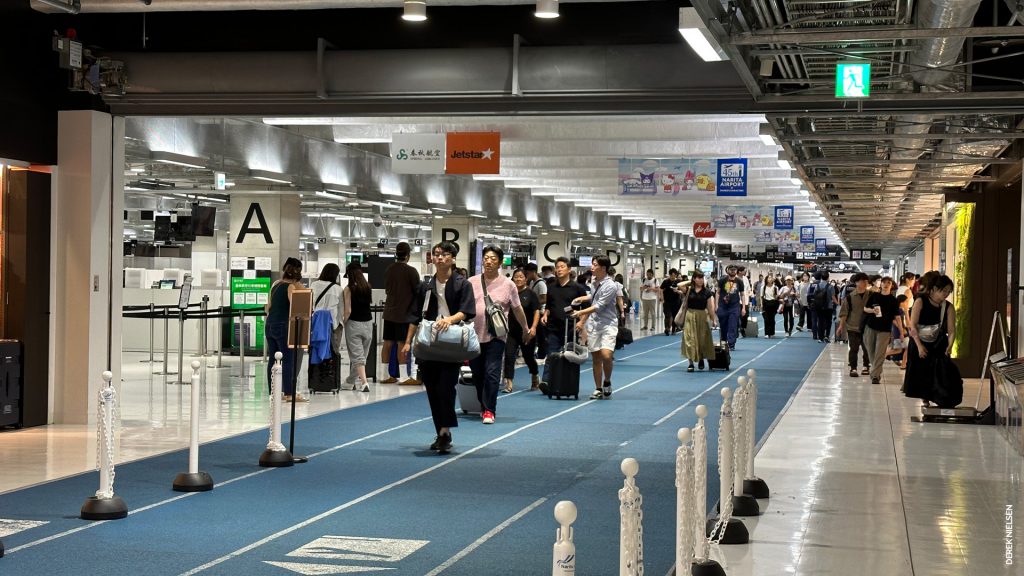
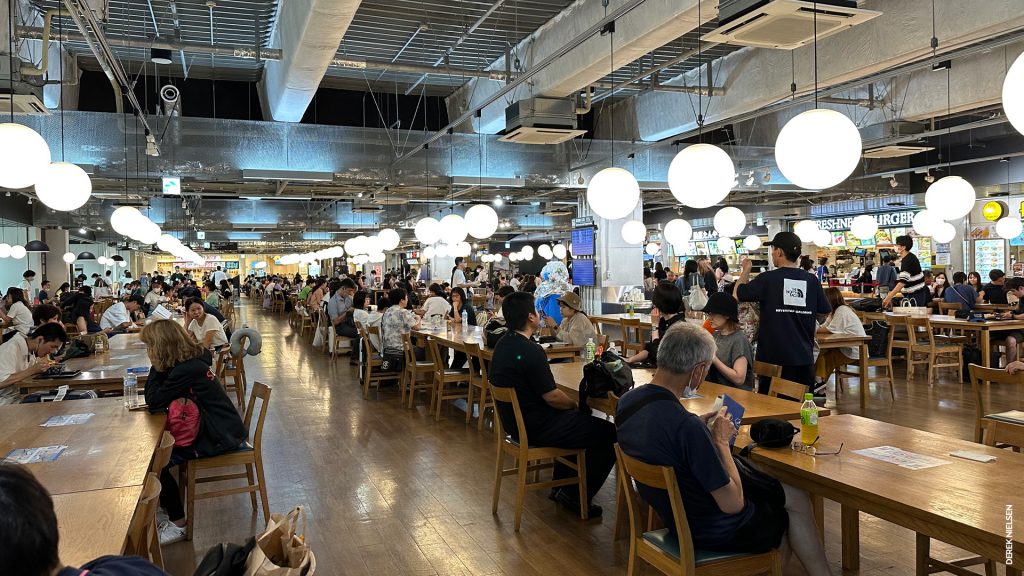
There’s fairly limited shopping options at Terminal 3, although you can walk about 500m to Terminal 2 and check out the landside options (before you complete immigration and security checks) there. The saving grace at Terminal 3, however, is the food court available landside. There are 10 restaurants on the airport’s website (but it seemed like more in person), and dozens of options with Chinese and Japanese food as the focus. There is a coffee shop and token Freshness Burger outlet as well.
Note, though, that once you go through security there is only one fairly small coffee shop airside, and no other hot food options; beyond that (or if you can’t get a seat) there are only vending machines. If you need a meal- or don’t book one for the flight- eat before you go through the checkpoint.
We also didn’t board through an aerobridge; you walk across the tarmac, and climb steps to get into the plane. If stairs are an issue for you, you might need to make sure you board early to have a little more climbing time.
The Lounge: There isn’t one- at least, not on Australia-Japan routes. There is no lounge at Cairns International Airport (the Reef Lounge was previously used by Cathay Pacific, but as of August 2023 it is currently closed). Qantas has a partner lounge at Osaka (listed as temporarily unavailable at the time of writing) but it is only available to customers on Qantas flights, and there is no lounge at Narita’s Terminal 3, full stop.
Jetstar has a handful of lounges available on other routes if you buy a Business Max fare bundle, or if you are a Qantas Club member. Otherwise Jetstar doesn’t really market itself as a premium airline, and its lounge access- or lack thereof- reflects that.
The Aircraft: Jetstar has a fleet of 11 Boeing 787-8 Dreamliners to operate flights from Australia to East Asia and Hawaii. The 787s have 21 seats in Business Class and 314 in Economy.
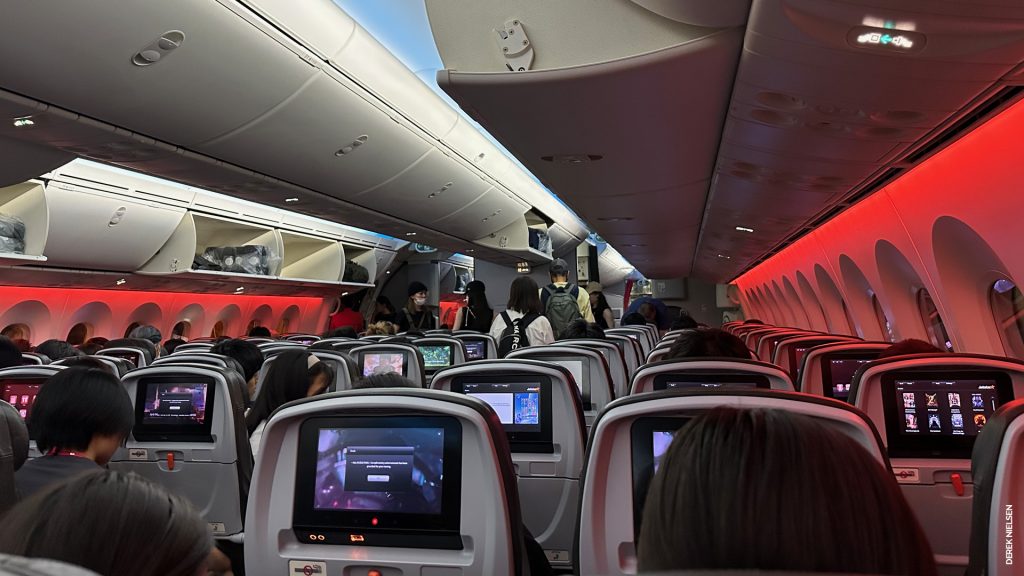
Behind the Business Class cabin is a small mini-cabin of three rows of Economy seats; behind those is a lavatory, and then the rest of the Economy cabin. The lavatories are at rows 13, 42 and 55 and are pretty standard airline lavatories, but seemed clean enough and well-maintained.
Jetstar’s Dreamliners have the same coloured ‘mood lighting’ other airlines use. It’s set to orange during boarding (gotta be about the branding) but is dimmed after the meal services to allow people to concentrate on their movies or sleep.
The Seats: this may be a slightly controversial take, but I felt more comfortable on Jetstar’s 787 seats than on a Qantas A330 flight I took back in May. The numbers somewhat support this; the 787’s cabin is slightly wider (549cm compared to 528cm), and Jetstar only packs nine seats across in a 3-3-3 configuration, while Qantas had 10 seats (3-4-3) per row.
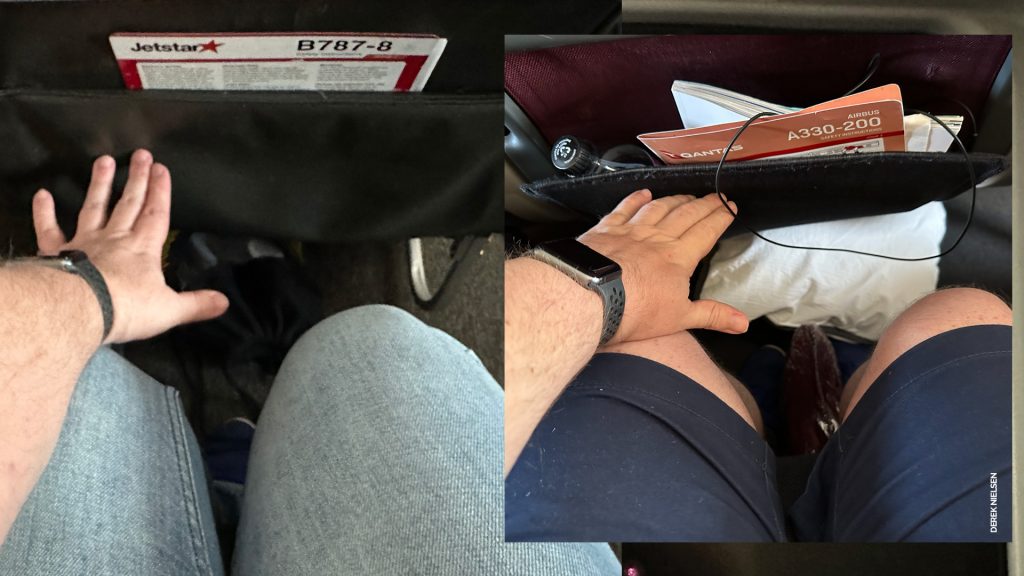
The seat pitch is slightly worse on Jetstar- 30 inches compared to 31- and Seatguru’s numbers suggest the seats are thinner (17 inches compared to 17.2 on Qantas). But the Qantas flight just seemed more cramped, possibly due to the extra seat in each row, and possibly to the inclusion of pillows and blankets on every seat. I get having the pillow and blanket on overnight flights, but on daytime flights I generally find them unncessary- and they take up space and legroom whether you want them or not. (I appreciate not everyone is as comfortable with airline air-conditioning, or inconsiderate seatmates running the vents on full blast.)
Note that I’m 165cm (5’4″) and your mileage may vary if you’re taller- you may wish to try to book a bulkhead or exit row seat with more legroom (but with no luggage space at your feet).
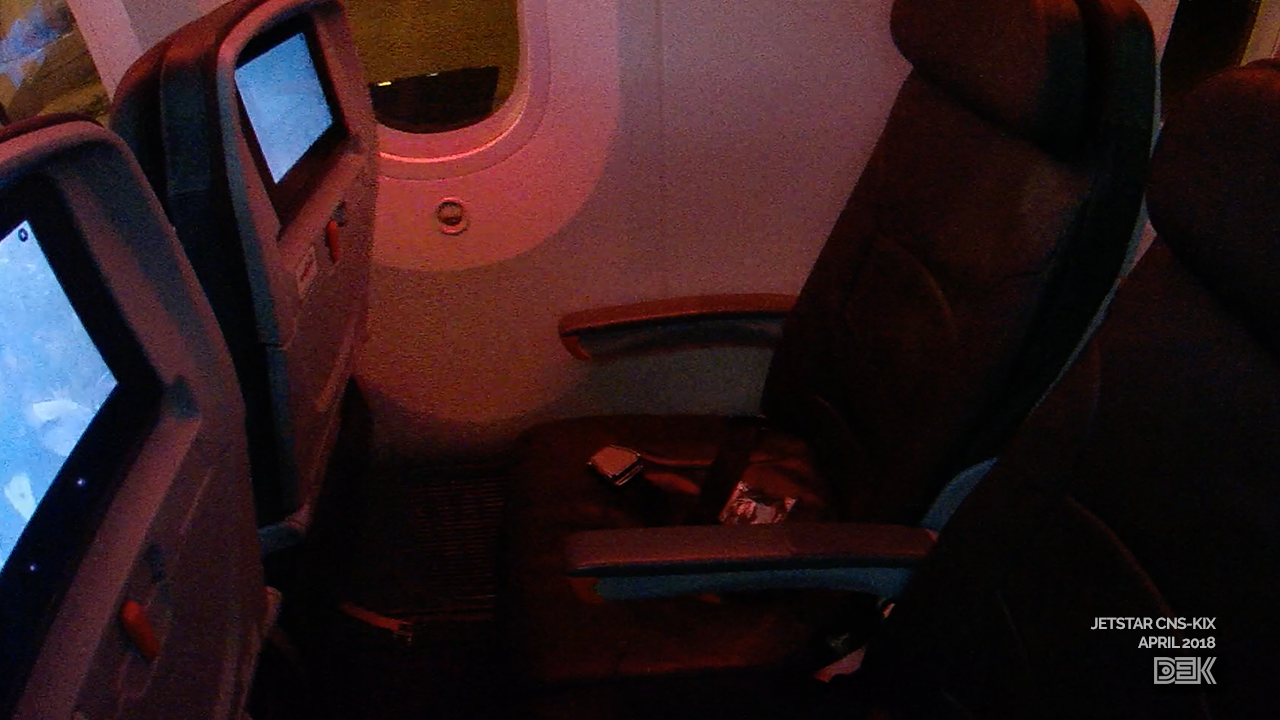
A photo I took on my 2018 flight with a slightly better (if no better-lit) view of the seat.
Window seats have two other passengers between them and the aisles. If access to the lavatories (or the ability to pace the aisles and stretch your legs) is an issue for you you might prefer to pre-book an aisle or bulkhead seat.
A reading light (controlled from the entertainment screen) and individual air vents are overhead.
The Entertainment: Jetstar’s Dreamliners have in-seat entertainment screens, and for a one-off fee of $13 you unlock the library for the entire flight. The selection was slightly older than my Qantas experience earlier this year, but current-year titles like Ant-Man And The Wasp: Quantumania, Creed III and Operation Fortune: Ruse De Guerre were available. The library was pretty varied too, so if you feel like a movie on your seven-hour flight, you might find it worth the money.
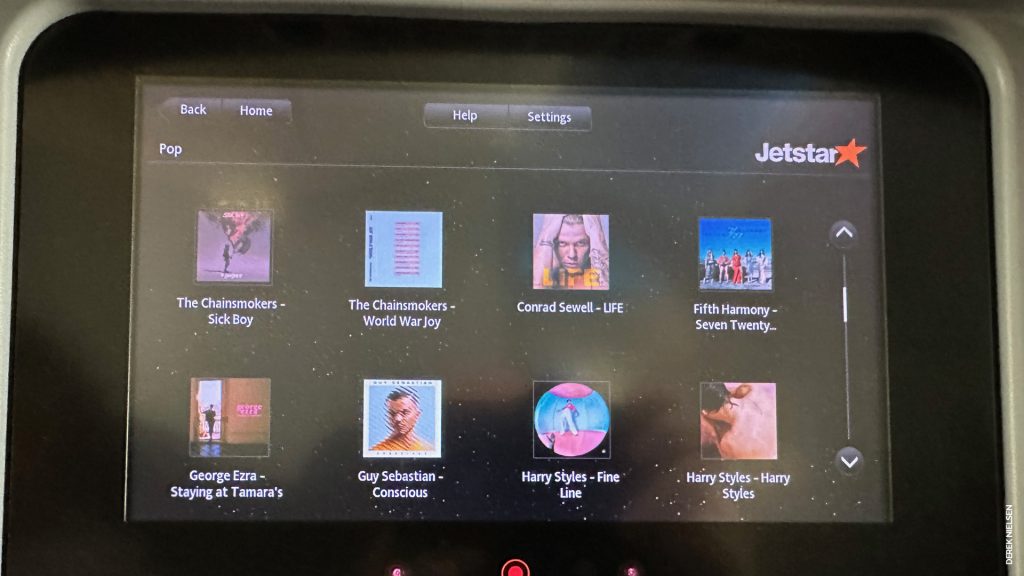
There is one other thing Jetstar has that Qantas doesn’t- music, with a pretty reasonable selection of albums available as part of the entertainment library. Bring your own headphones for better audio quality, Jetstar’s earbuds are a bit rubbish. (You no longer need an airline headphone adaptor, either- standard headphone mini-jacks work just fine.)
There are some touch-screen games available, with the usual fare of Solitaire and Tetris as well as the live inflight map. Jetstar doesn’t offer in-flight wi-fi.
Food and Drink: The base fare doesn’t include food, although the Starter Plus and Starter Max bundles include a meal. Jetstar offers a buy-on-board service, and if you have particular needs or requests you can pre-book meals before you fly.
The options are mostly fairly light- sandwiches, meat pies, and noodle soups- and you can order for the early meal service (about an hour after takeoff) or late (about 90 minutes before landing). Coming back from Japan you might like to book a quick snack on that later meal service, thus giving you a 3am sandwich and a coffee before you hit the immigration queue. (That’s $16 if bought on board, cheaper if pre-booked.)
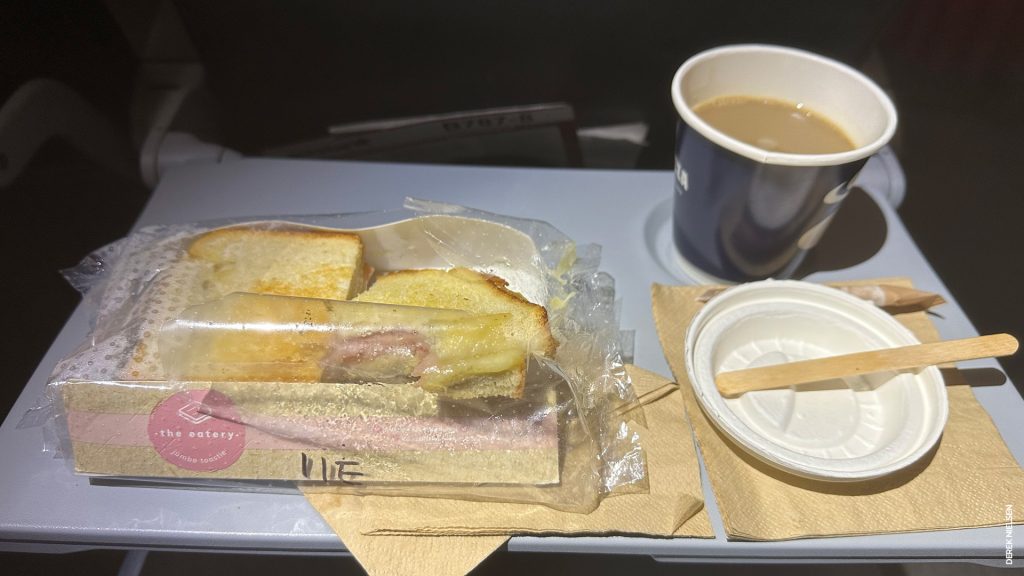
There are vegan, vegetarian and gluten-free options on the menu as well, which you can preview here before you book. Jetstar does allow you to bring your own food, but no hot beverages or alcohol for consumption in flight.
The Amenity Kit: none as standard, although you can buy or pre-book one for $25 that has a blanket, eye mask, neck cushion, toothbrush and a few other perks. Buy one if you want, keep it for later flights.
The Baggage Allowance: With a Starter fare, there is no checked baggage allowance, and onboard you can only carry two bags totalling 7 kilograms or less between them. And ‘bag’ includes plastic bags. In Japan I had a thin backpack and two duty-free shopping bags, and was told that this counted as 3 bags and exceeded the allowance- I put one bag inside another and was fine from there. (I was under the 7kg limit, to be fair.)
A Starter Plus (20kg) or Starter Max (30kg) bundle adds a checked baggage allowance, or you can pre-book bags. If you know you’ll need extra bags to carry all your shopping- and trust me, I’ve been there!- the Plus bundle makes sense. It’s $85 with a meal included, while baggage added at the airport is $70 on its own (and only includes 15kg).
The Bottom Line: A few years ago I wrote that I could go without the perks on an international flight for the right fare, and Jetstar still holds up in 2023.
…can I go without for a cheap international flight? The answer in this case is an absolute ‘yes’. The flight went smoothly, the cabin crew were very good, and I got the things I did pay for. At this fare, I would definitely recommend Jetstar on long-haul.
Me in 2018
The value proposition is still there- it costs about $600 return for the fare, including a few add-ons, and possibly a lot lower if you’re flexible on dates. The flight itself is still fine other than a one-off delay, Cairns Airport isn’t great but is getting a refit, and baggage allowance isn’t a problem if you can pack carefully. (It helps I was travelling in summer and didn’t need any bulky clothes.)
And in a few areas, Jetstar is better than some of its big sister airline’s fleet- slightly better seats, arguably slightly better entertainment system- to the point where it may be a better choice for travellers even once you’ve added on the fees for meals and bags. (Qantas has an advertised fare at the moment of $1415 return for Brisbane to Tokyo, and you can almost book Jetstar’s Business Class product out of Cairns at that price.)
All prices are in Australian dollars and were correct at the time of publication. Fares were purchased from the airline’s website; the airline was not notified that I would be writing a review and did not provide consideration.
At the time of writing $1 AUD = $0.65 USD = 94.20 JPY.


